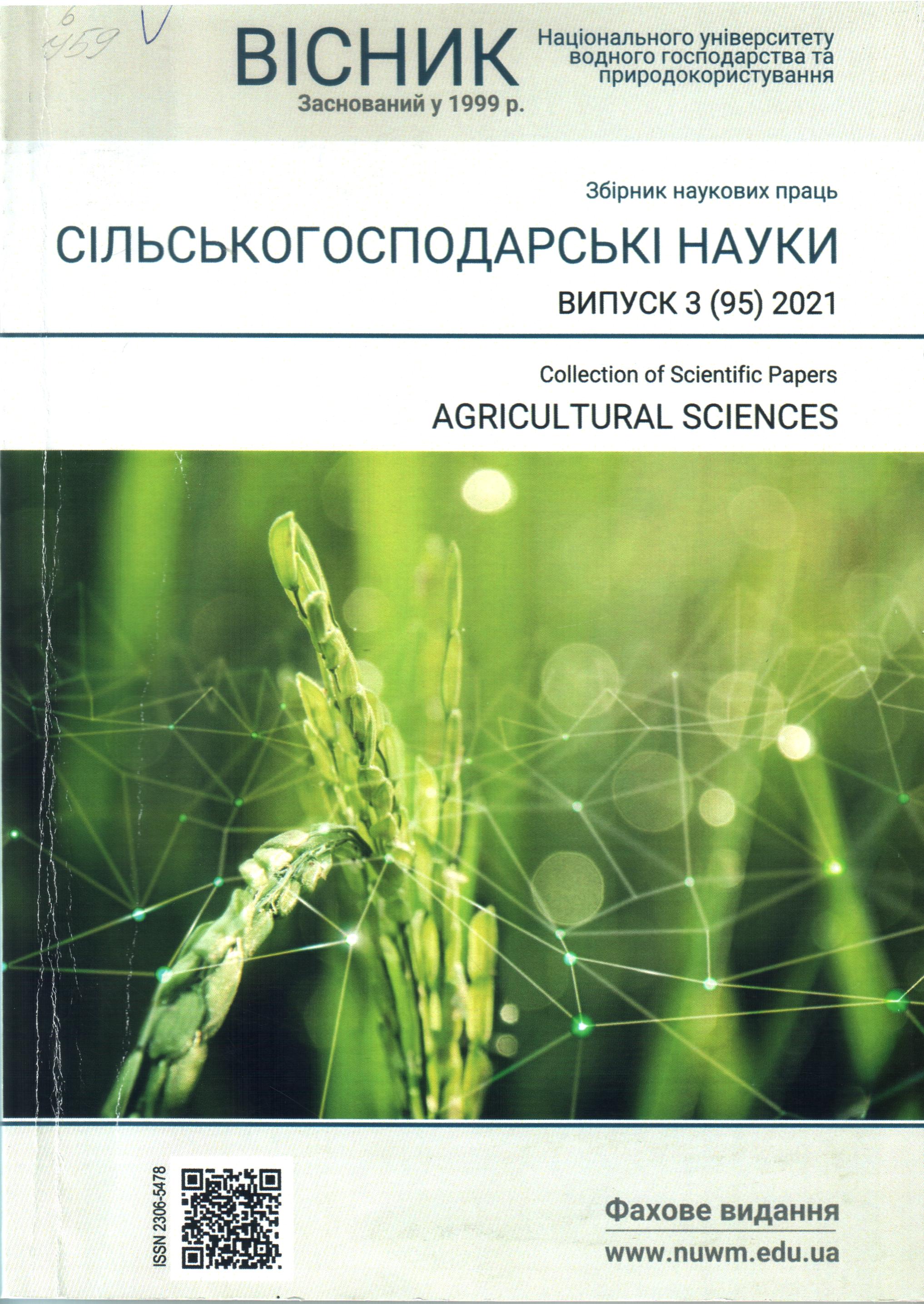GULLY EROSION OF SOILS OF THE FOREST-STEPPE ZONE OF RIVNE REGION
Keywords:
soil erosion, soil degradation, soil cover.Abstract
An urgent problem of modern agricultural production in Ukraine and the Rivne region, in particular, is the intensification of erosion processes, which leads to soil degradation, especially in the foreststeppe zone.Currently, agricultural land in the Rivne region is 933.9 thousand hectares, including eroded land – 323.3 thousand hectares, or 34.6% of the total area of agricultural land.This area of eroded lands is dominated by arable land, which covers an area of 69.4%. This situation means that the protection of soil cover from all types of erosion requires an immediate solution, without which sustainable land use becomes impossible.In the Rivne region, soil erosion is a natural exogenous process due to the combined activity of erosion factors: geological structure, relief geomorphology, precipitation, air, fauna and flora, and manmade activities.In Ukraine, 350 to 500 million tons of soil are lost annually from erosion. Erosion products carry up to 15 million tons of humus, about 0.8 million tons of nitrogen, 0.7–0.9 thousand tons of phosphorus, about 10 million tons of potassium, which is much more than is introduced into the soil with fertilizers.The authors study the negative role of gully erosion processes in the forest-steppe zone of the Rivne region to determine effective measures to preserve soil cover.Crop yields on eroded soils are 20–60% lower than on noneroded ones. According to qualitative estimates, the loss of agricultural products from erosion exceeds 10 million tons of grain units, which causes significant environmental and economic losses.Field research on the study of ravine erosion within the foreststeppe zone of the Rivne region was conducted at the regional level, based on the results of which two reference sites were selected, which characterize the excellent geological-geomorphological and climatic conditions.The greatest activation during the observation period is observed in those ravines that were in the active and intensive stages of development. There is a direct dependence on the growth of the number of ravines, which intensified on the average annual precipitation in the warm period of the year.Тhe dynamic state of development of ravine erosion is estimated and concrete measures for the termination of the destruction of a soil cover within the forest-steppe zone of the Rivne region are offered.References
Бровко Г. І. Вивчення сучасних екзогенних геологічних процесів на території Волинської та Рівненської областей. Рівне, 2006. Фонди РГРЕ. 232 с.
Зубець М. Ерозія ґрунтів – загроза їх родючості. Голос України. URL:
www.golos.com.ua/article/193664 (дата звернення: 08.07.2021).
Клименко М. О., Долженчук В. І. Застосування органічних добрив та їх роль у підвищенні родючості ґрунтів. Вісник НУВГП. Сільськогосподарські науки. 2013.
Вип. 2 (62). С. 3–9.
Коротун І. М., Коротун Л. К. Географія Рівненської області : навч. підручник. Фірма «Принт. Хауз» Рівне, 1996. 380 с.
Новак Т. А. Загальні риси геоморфологічної будови Мізоцької височини. Вісник Львівського університету. Серія географічна. 2013. Вип. 42. С. 265–273.
Фурман В., Солодка Т., Володимирець В. Стан еродованості ґрунтів Рівненського району Рівненської області. URL: ecjnf.at ua/publ/konferencia 2014.10.16 (дата звернення: 08.07.2021).
REFERENCES:
Brovko H. I. Vyvchennia suchasnykh ekzohennykh heolohichnykh protsesiv na terytorii Volynskoi ta Rivnenskoi oblastei. Rivne, 2006. Fondy RHRE. 232 s.
Zubets M. Eroziia gruntiv – zahroza yikh rodiuchosti. Holos Ukrainy. URL: www.golos.com.ua/article/193664 (data zvernennia: 08.07.2021).
Klymenko M. O., Dolzhenchuk V. I. Zastosuvannia orhanichnykh dobryv ta yikh rol u pidvyshchenni rodiuchosti gruntiv. Visnyk NUVHP. Silskohospodarski nauky. 2013. Vyp. 2 (62). S. 3–9.
Korotun I. M., Korotun L. K. Heohrafiia Rivnenskoi oblasti oblasti : navch. pidruchnyk. Firma «Prynt. Khauz» Rivne,
380 s.
Novak T. A. Zahalni rysy heomorfolohichnoi budovy Mizotskoi
vysochyny. Visnyk Lvivskoho universytetu. Seriia heohrafichna. 2013. Vyp. 42. S. 265–273.
Furman V., Solodka T., Volodymyrets V. Stan erodovanosti
gruntiv Rivnenskoho raionu Rivnenskoi oblasti. URL: ecjnf.at
ua/publ/konferencia 2014.10.16 (data zvernennia: 08.07.2021)

